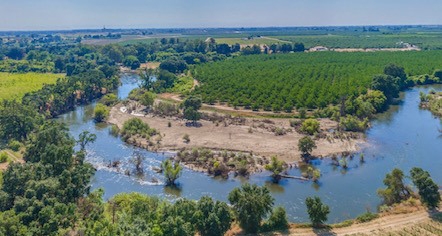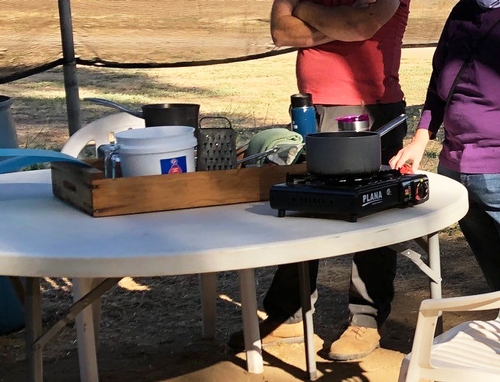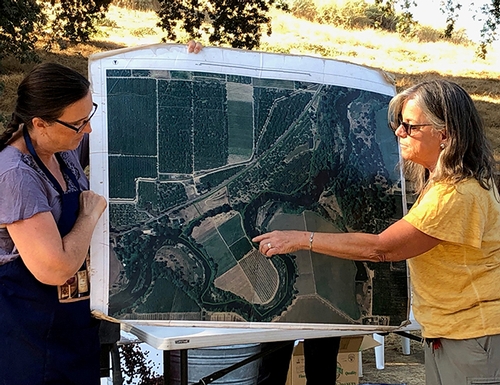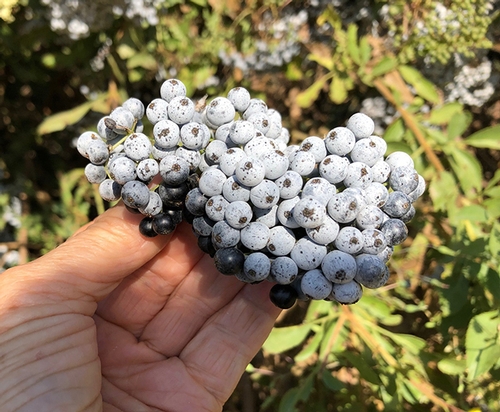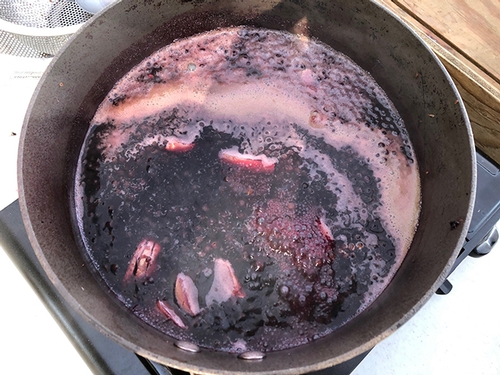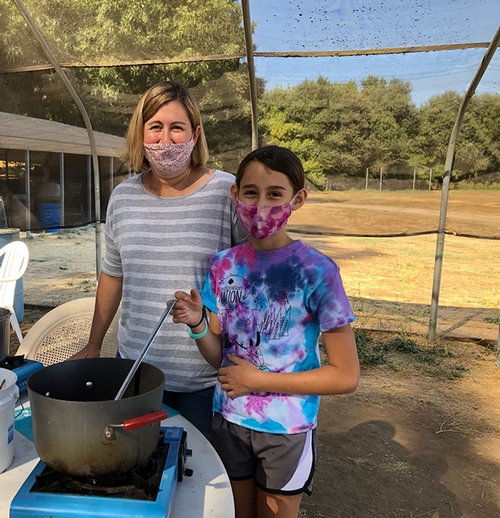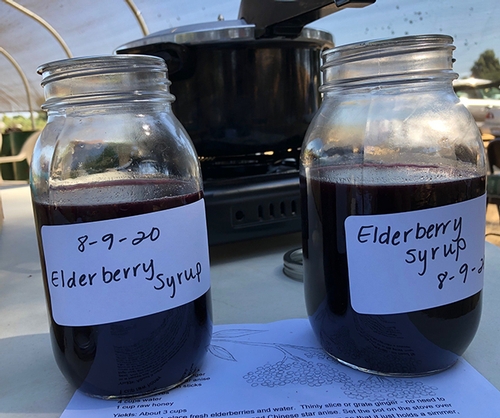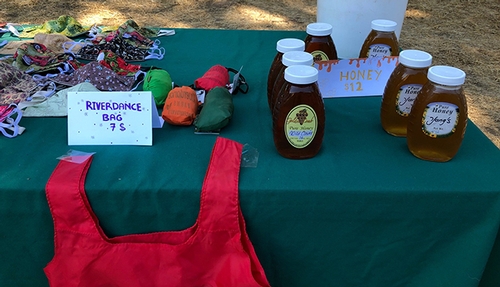Outdoors. Social Distance. Face Masks. Elderberries!
Cindy Lashbrook, co-owner of Riverdance Farms on the Merced River, grows organic walnuts, cherries, blueberries and more. Most years, she organizes the popular Pick and Gather Festival with U-Pick, music, vendors, education, and river fun in late May or June when blueberries and cherries are ready to pick. In 2020, due to coronavirus restrictions, there was no Pick and Gather Festival at Riverdance Farms.
But, with an abundance of careful planning and social distancing, Cindy and her colleague Kathy Anuszczyk invited visitors to the farm in August for a "Make and Take" Elderberry workshop. Lucky participants, including this author, were guided in creating, hands-on, an Elderberry-Honey Syrup/Tonic, from harvesting elderberries to a guided step-by-step infusion.
Reservations required - Several sessions of the elderberry workshop were offered, marketed through Facebook and other social media. The number of participants for each session was limited to six household groups of people that Cindy and Kathy were able to accommodate at six tables, set up a distance from each other, facing an instructor's demonstration table under a large shade tent. Each participant paid $30, or $25 if the household group included multiple people.
When participants arrived at the farm, wearing face masks, each group was directed to a table already set up with all the equipment needed to make syrup, including gas-fired cook-stoves, cooking pots, spoons, sieves, measuring cups, ladles, picking clippers or knives and colanders for washing berries. In addition, the organizers had set up water drums with faucets as washing stations for the fruit and outdoor stainless steel sinks with hot water for washing pots and utensils.
After Cindy oriented participants using a map of the farm, identifying the orchards, the river and the elderberry trees, everyone took a picking bucket and walked to pick berries. California blue elderberries are often grown in hedgerows and on the edges of farms or on irregular areas unsuitable for crops. Elderberries attract birds and pollinators and can be processed into jams, syrups and other products with nutritional and medicinal value. As people walked, picked and cooked, Kathy explained the nutrition and uses of elderberries.
The Process - Picking was delightful; the trees were laden with large clumps of berries with a distinctive soft blush, ready to be cut and placed in the picking buckets. Each participant easily picked at least two pounds of berries. Returning to the tables, the next step was de-stemming the berries into the colanders. After rinsing and measuring, everyone added water to their cooking pans and set to boiling the berries down as the first step to creating syrup. Kathy distributed ginger and herbs to everyone to add to the berry mixture as it boiled.
When boiling had thickened the berry syrup sufficiently, it was time to press the mix through a sieve into a bowl, separating the liquid from the solids of the berries and herbs. Then a cup of honey was stirred in as sweetener to each bowl of liquid to complete the syrup.
After a little cooling, the mix was ladled into a clean quart jar. Each workshop participant ended the workshop with a jar of elderberry syrup (not processed - these needed to be kept in the refrigerator) and a recipe to take home. Of course, everyone had a chance to buy more berries, honey, or other products if they wanted.
To learn more about growing, harvesting, marketing and using California blue elderberries, see the newly-created UC SAREP California Elderberries website.
